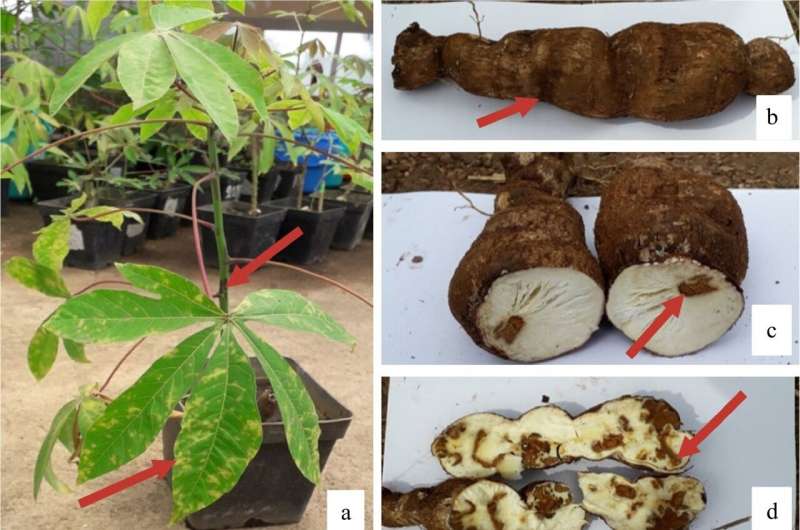This article has been reviewed according to Science X's and . have highlighted the following attributes while ensuring the content's credibility:
fact-checked
trusted source
proofread
Advancing cassava brown streak disease resistance

A research team reviewed the advancements in managing cassava brown streak disease (CBSD), highlighting the integration of new plant breeding technologies (NPBTs) with traditional breeding to enhance resistance. These efforts are crucial for providing African farmers with CBSD-resistant cassava varieties that also deliver high yields and meet market preferences.
The team also advocates for a collaborative network of African breeders, access to modern technologies, strengthened stakeholder capacities, controlled planting material movement, and efficient trait introgression in breeding programs to achieve these goals. The paper is in the journal Tropical Plants.
Cassava, a staple for 800 million people, primarily grown in over 100 tropical and subtropical countries, faces significant yield challenges due to cassava brown streak disease (CBSD), particularly in Africa where production significantly lags behind potential yields.
Despite the resilience of cassava in harsh conditions and its substantial starch content, CBSD has drastically hindered productivity. Current research focuses on breeding CBSD-resistant varieties through traditional and new plant breeding technologies (NPBTs), yet problems like the breakdown of resistance in once-tolerant varieties and the need for sustainable, disease-free planting material distribution remain critical.
A study outlines existing breeding strategies for combating CBSD and highlights the benefits of incorporating NPBTs to quickly develop and distribute CBSD-resistant cassava varieties to African farmers.
The review first introduces that cassava is a highly heterozygous crop, typically propagated asexually using stem cuttings or tissue culture systems. Due to the characteristics of protogyny, hermaphroditism, and mainly hybrid fertilization in cassava, controlling pollination can produce full sibling offspring.
However, challenges arise due to the crop's high heterozygosity and the environmental sensitivity of its flowering, complicating controlled breeding efforts. The author detailed the methods for screening cassava CBSD resistant germplasm under two different conditions, field and greenhouse.
Emphasizing the critical role of NPBTs, the review advocates for their integration into cassava breeding programs to expedite the development of varieties resistant to CBSD. By leveraging both traditional and modern breeding techniques, the review underscores the need for a multifaceted approach to overcome breeding challenges and improve cassava's resilience and yield in diverse environments.
According to the study's researcher, Prof. Hong-Bin Zhang, "CBSD remains an important constraint to cassava production in Eastern and Central Africa. Efforts to develop CBSD resistance will need to be an important part of modernized breeding approaches that aim to develop improved varieties with balanced trait sets that meet the needs of user-focused product profiles."
Overall, the review explores cassava's complex reproduction, emphasizing the integration of new plant breeding technologies to enhance the development of disease-resistant varieties and address the challenges of genetic diversity and environmental sensitivities in breeding programs.
More information: Jean Pierre Bizimana et al, Breeding strategies for mitigating cassava brown streak disease in Africa, Tropical Plants (2024).
Provided by Chinese Academy of Sciences


















